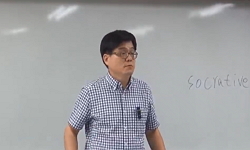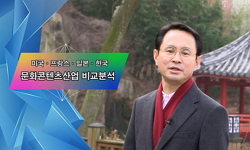History education is an activity to teach kno1edge about the past of human beings and, based on the knowledge, to develop historical thinking power and insight and cultivate desirable a historical value system and attitude. To attain these goals, stud...
http://chineseinput.net/에서 pinyin(병음)방식으로 중국어를 변환할 수 있습니다.
변환된 중국어를 복사하여 사용하시면 됩니다.
- 中文 을 입력하시려면 zhongwen을 입력하시고 space를누르시면됩니다.
- 北京 을 입력하시려면 beijing을 입력하시고 space를 누르시면 됩니다.

포스트모던 역사이론을 중심으로 한 역사학습프로그램 개발 = Development of a History Learning Program based on Postmodern History Theories
한글로보기https://www.riss.kr/link?id=A107198258
- 저자
- 발행기관
- 학술지명
- 권호사항
-
발행연도
2010
-
작성언어
-
- 주제어
-
KDC
300
-
등재정보
KCI등재
-
자료형태
학술저널
-
수록면
45-92(48쪽)
- 제공처
-
0
상세조회 -
0
다운로드
부가정보
다국어 초록 (Multilingual Abstract)
History education is an activity to teach kno1edge about the past of human beings and, based on the knowledge, to develop historical thinking power and insight and cultivate desirable a historical value system and attitude. To attain these goals, students should actively participate in the process of historical exploration rather than passively memorizing facts in the past. That is, by exploring history through critical and analytical thinking and historical imagination, they should practice historical thinking and acquire abilities to contribute to the development of the individual, the country, the society and all mankind. This is the objective of history education. Thus, in order to overcome the tendency of history education inclining to the memorization and transfer of historical knowledge and passive learning, the present study purposed to provide students with opportunities to experience the thinking process that historians use to understand history. As a specific method of applying such opportunities, we suggested a history learning program based on postmodern history theories. The objectives of the history learning program based on postmodern history theories are as follows. First, postmodern history theories refrain from typified historical evaluation of facts in the past. This feature can change the fixed idea that history is the permanent truth and make students see history as an object of questioning and, furthermore, provide them with opportunities to participate actively in historical study rather than learning passively. Second, postmodern history theories are focused on individuals and groups alienated by grand discourses in historical description. The history of individuals and groups alienated in historical description is mostly related to families, communities, etc. that students can experience easily around their everyday life. The use of such materials of history learning stimulates students interest and fosters their understanding and. ultimately, enhances the efficiency of history learning. Thus, we designed the method of disintegration of historical description for approach from various historical viewpoints, and that of reading through small things from the viewpoint of using historical learning materials available around the students. The disintegration of historical description considers existing historical description not to have as unchangeable firm objectivity as the rules of natural science but to be changeable and flexible. Thus, it disintegrates existing historical description and changes the view of past facts from a new angle. The disintegration of historical description is compatible with the goals of elementary history education, which are to develop abilities to find and explore the basic concepts and principles of social thoughts and, based on the abilities, to raise democratic citizens equipped with comprehensive and rational discernment. Reading through small things aims at history learning through the history of community that the students can contact easily, and excavating the history of people alienated from existing historical description. This helps students have learning based on their family and community to which they belong so that they can overcome the macroscopic view of the central government in the contents of existing social studies textbooks. Summing up, the application of postmodern history theories to history education is considered to stimulate students interest and various ways of thinking based on materials available to them and ultimately to make them active learners.
국문 초록 (Abstract)
역사교육은 인간의 과거에 관한 지식을 가르치고 이를 기초로 역사적 사고력과 통찰력을 신장시키며, 바람직한 역사적 가치관과 태도를 함양하기 위한 교육활동이다. 이러한 목표를 달성하...
역사교육은 인간의 과거에 관한 지식을 가르치고 이를 기초로 역사적 사고력과 통찰력을 신장시키며, 바람직한 역사적 가치관과 태도를 함양하기 위한 교육활동이다. 이러한 목표를 달성하기 위하여 학생은 단순히 과거사실을 암기하는 수동적인 학습자가 아니라 역사적 탐구과정에 직접 참여하는 능동적인 학습자가 되어야 한다. 즉 학생 스스로 비판적·분석적 사고와 역사적 상상력을 사용하여 역사를 대함으로써 역사적 사고력을 신장하고 개인, 국가, 사회, 인류의 발전에 기여할 수 있는 민주시민의 자질을 기르는 것이 역사교육의 목표이다. 이에 본 연구에서는 역사교육이 역사지식의 암기와 지식의 전수로 흐르는 편향성과 수동적인 학습이 이루어지는 것을 극복하기 위하여 역사가가 역사를 인식하는 사고과정을 학생들로 하여금 경험하는 기회를 제공하고자 하였다. 이를 위한 구체적인 적용방안으로서 포스트모던 역사이론을 중심으로 한 역사학습프로그램을 제시하였다. 포스트모던 역사이론을 중심으로 역사학습프로그램을 구성한 목적은 다음과 같다. 첫째, 포스트모던 역사이론은 과거사실에 대한 정형화된 역사적 평가를 지양한다. 이는 역사가 영원불변한 진리라는 인식을 전환시키고 학생이 역사를 질문의 대상으로 삼고 역사학습의 수동적 존재에서 능동적 존재로의 전환을 모색하여 사고의 기회를 마련해 줄 수 있다, 둘째, 포스트모던 역사이론은 거대담론에 의해 역사서술에 있어서 소외된 개인과 집단에 관심을 갖는다. 역사서술에 있어서 소외된 개인이나 집단의 역사는 대부분 학생들 주변에서 쉽게 접할 수 있는 가족, 지역사회 등과 관련된 것이다. 이렇게 학생들이 접하기 쉬운 역사학습 자료들을 이용하여 흥미를 유발하고 이해를 도모함으로써 결과적으로 역사학습의 효율을 높일 수 있다. 이에 다양한 역사적 관점으로 접근할 수 있도록 하기 위하여 역사서술의 해체 , 학생을 주변의 역사학습 자료의 활용이라는 관점에서 작은 것을 통해 읽기 라는 방법을 구안하였다. 역사서술의 해체 는 기존의 역사서술이 자연과학의 법칙처럼 변하지 않는 확고한 객관성을 갖고 있는 것이 아니라 변할 수 있는 유동적인 것으로 인식한다. 그리하여 기존의 역사서술을 해체하여 새로운 각도에서 과거사 실을 바라볼 수 있는 인식의 전환을 이루도록 한다. 이러한 역사서술의 해체 는 초등학교 역사교육의 목표인 사회사상(社會事象)의 기본개념 및 원리를 발견하고 탐구하는 능력을 익혀 이를 토대로 종합적이고 합리적인 판단능력을 갖춘 민주시민의 양성이라는 취지에 부합한다. 작은 것을 통해 읽기 는 학생이 직접 접하기 쉬운 지역 단위의 역사를 통해 생생한 역사학습을 전개하고 종래의 역사서술에서 소외되었던 사람들의 역사발굴을 목표로 한다. 이는 현행 사회과 교과서의 내용들이 거시적이고 중앙정부의 시각으로 구성된 한계를 극복하기 위하여 학생이 쉽게 접할 수 있는 가정, 지역사회를 모태로 학습을 전개할 수 있도록 해준다. 요컨대 역사교육에 있어서 포스트모던 역사이론의 적용은 학생들이 쉽게 접할 수 있는 자료를 바탕으로 흥미를 유발하고 다양한 사고를 할 수 있는 계기를 마련함으로써 능동적인 학습자가 될 수 있는 계기를 마련해줄 수 있다고 생각한다.
동일학술지(권/호) 다른 논문
-
- 제주학회
- 좌혜경(Hye Kyung Choa)
- 2010
- KCI등재
-
지역적 맥락에서 본 제주농촌지역의 성매매 지형에 관한 연구 : 지역개발 과정에서 ‘피리’ 마을 주민과 다방종사여성의 경험을 중심으로
- 제주학회
- 강경숙(Kyung Sook Kang)
- 2010
- KCI등재
-
제주도 내 ‘군사기지 유치’ 담론을 통해 본 평화만들기의 정치학
- 제주학회
- 이보라(Bo Ra Lee)
- 2010
- KCI등재
-
출토유물을 통한 원당사지(元堂寺址)의 조성시기와 성격 고찰
- 제주학회
- 현문필(Moon Phil Hyun)
- 2010
- KCI등재




 스콜라
스콜라






